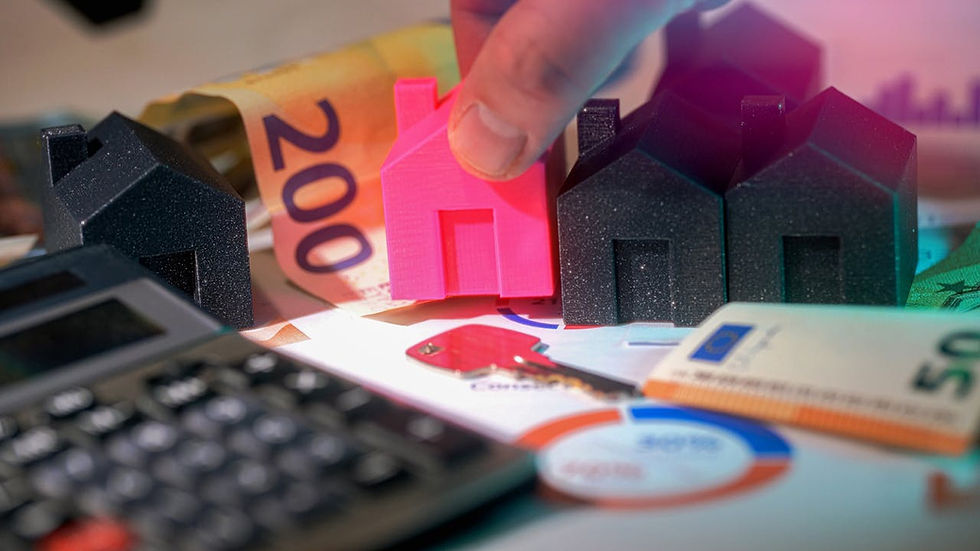Exploring High-Yield Commercial Properties in Singapore - Guide by Ang Chee Hian
- Ang Chee Hian
- Aug 7
- 4 min read
Updated: Nov 21
Some properties earn you rent. Others grow your portfolio. A rare few do both.
In a market as dynamic as Singapore's, knowing where to park your money isn't just important- it's everything. The city doesn't hand out high-yield commercial gems freely. You have to know where to look, what to avoid, and when to move. For seasoned investors, it's about timing. For smart investors, it's about positioning.

Why Singapore's Commercial Property Market Still Turns Heads
Singapore has always been more than just a global business hub- it's a magnet for stability. While residential real estate gets plenty of attention, commercial properties have been quietly building serious wealth for those who understand how the system works.
Office buildings, retail units, mixed-use spaces, industrial zones- they all operate on different clocks. The right one gives you higher rental income, fewer maintenance headaches, and longer tenancy agreements. The wrong one ties up your capital and gives you more friction than return.
It's no longer about owning space- it's about making space work for you.
The Real Game: Rental Yields That Make the Cut
Rental yield is where the numbers speak clearly- if you know how to listen.
Investors who know their way around Singapore's districts are zoning in on commercial spots with potential to return stronger rental yields than their residential counterparts. While residential yields often hover at the lower end of the spectrum due to cooling measures and financing limits, well-positioned commercial properties can often outperform- quietly but consistently.
But don't expect quick wins without due diligence. Location still drives performance. Foot traffic, accessibility, transport links, and zoning matter more than ever.
Who's Winning in Today's Market?
Take a look - you will see a change. Corporates are downsizing, flexible workspaces are increasing, and niche markets are gaining popularity. From logistics to health-related units, and lifestyle-based retail investors are branching out into areas outside of traditional office space.
The ones who win? They're not just buying space- they're buying into sectors that are growing.
What Smart Investors Are Prioritizing Now
There's a clear checklist forming among informed investors:
Long-term tenant security: Leases that go beyond short-term turnover build predictable cash flow.
Efficient layouts: Spaces that are versatile enough for different tenant needs reduce vacancy risk.
Maintenance-light assets: Properties that don't bleed capital on upkeep keep your margins clean.
Location leverage: Properties in emerging commercial clusters will benefit from infrastructure investment.
Zoning flexibility: Having adequate land use classification allows you to attract a wider range of tenants, important in changing markets.
What you want is a property that stays relevant, even when market cycles change.
Where Mistakes Usually Happen
Many investors get caught up in surface-level appeal. They overvalue aesthetics, undervalue footfall. They chase short-term appreciation, ignoring tenant sustainability.
But the reality is that a sleek lobby or branded facade may not guarantee performance. Neither does a prime postal code if your tenant turnover rate is through the roof. In high-yield commercial investing, glamor doesn't pay the bills- occupancy does.
That's why the best players approach every deal like a business. They study the lease structure, the past tenancy history, the upcoming competition, and what anchor tenants are doing nearby.
Navigating the Landscape with the Right Strategy
What works today won't necessarily work seven or eight months from now. The market is agile, so should be your approach.
Think portfolio-first. How does this property strengthen what you already own? Does it balance your risk, spread your exposure, or lock you into a single income stream? Diversifying across property types- or within commercial segments- can keep your income strong and your capital protected.
And don't overlook timing. Catching a wave too late means you buy at the top. Getting in too early without backing research can drain your holding power. Working with a trusted advisor like Ang Chee Hian can help decode complex lease structures, zoning laws, and yield patterns."
What's Shaping the Future?
If you look around, you'll notice that Singapore's commercial pulse is changing.
Flexible leasing models, sustainable design, and tech-enabled buildings are no longer luxury perks. They're baseline expectations. Investors who catch onto these preferences early position their properties as future-ready- and more desirable to higher-quality tenants.
And with Singapore's smart city evolution, infrastructure upgrades are pushing demand beyond traditional zones. Peripheral commercial areas are quietly becoming tomorrow's power hubs.
You don't need 20 properties to build lasting wealth. Just one high-yield commercial space that's built on research, not luck.
Ready to Move Beyond Theory?
Understanding Singapore's commercial property landscape is just the first step. The real opportunity lies in applying these insights to actual investment decisions.
Whether you're evaluating your first commercial property or expanding an existing portfolio, professional guidance can make the difference between average returns and exceptional ones. If you’re considering your next move in commercial real estate, Ang Chee Hian’s insights can help you move with clarity and confidence.
FAQS:
What rental yields can I expect from Singapore commercial properties?
Commercial properties typically yield 4-8% annually, depending on location and type. Industrial and emerging area retail often achieves higher yields than prime office spaces.
Which commercial property types are performing best now?
Logistics warehouses, flexible workspaces, and healthcare-related units are outperforming. Traditional offices are adapting through flexible leasing models.
How do I spot an emerging commercial cluster?
Look for upcoming MRT extensions, government infrastructure projects, and major corporate relocations. These signal long-term growth potential.
What's the difference between gross and net rental yield?
Gross yield is annual rent divided by purchase price. Net yield factors in taxes, maintenance, and vacancy periods - typically 1-2% lower.
Why are longer commercial leases better?
Commercial leases run 3-6 years versus 1-2 years residential, providing predictable cash flow and often include annual rental increases.



Comments